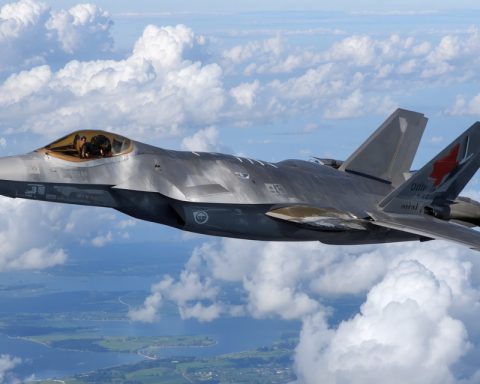- The Netherlands is overhauling its airspace to integrate military training with environmental goals, emphasizing both defense and sustainability.
- New training zones for F-35 fighter jets will be established over the northern seas, replacing restricted areas in the south and east.
- More than 80% of military exercises will take place over the ocean, minimizing the impact on populated areas.
- The plan aims to reduce noise pollution and carbon footprints through direct flight paths and advanced descent technology for civilian aircraft.
- Implementation will unfold in stages from 2028 to 2035, with coordination from German authorities and Eurocontrol to ensure a unified European airspace.
- Schiphol Airport will lead in adapting to the new airspace design, balancing military readiness with environmental conscientiousness.
The Dutch skies are set for a dramatic transformation as the Netherlands reimagines its airspace, harmonizing military prowess with environmental stewardship. Vast expanses over the northern seas will soon echo with the roar of F-35 fighter jets, as the nation carves out expansive training zones to replace constrained southern and eastern areas. Here, the sweeping blue will serve as a crucible for complex fighter maneuvers, at soaring altitudes that reveal infinite skies, all while more than 80% of military exercises will glide over oceanic depths.
Behind this ambitious overhaul lies a dual mission: to fortify national defense amid escalating global tensions and to weave a tapestry of environmental consciousness through civil aviation. Civilian skies will unlock new efficiencies as circuitous detours become linear paths, slicing fuel consumption and travel time. The whispers of descending aircraft, like gentle lullabies, will hush urban soundscapes, easing noise pollution and shrinking carbon footprints, courtesy of continuous descent technology.
This visionary leap, set to unfurl in stages from 2028 to 2035, speaks to a broader ambition. The careful choreography with German counterparts and Eurocontrol showcases a commitment to a cohesive European sky, where borders melt into fluid passages, optimized for safety and sustainability.
Navigating these skies, once cluttered and chaotic, will become a lesson in precision and environmental responsibility. As Schiphol Airport pioneers training in this new orchestration, the skies above the Netherlands promise a future where military might meets green horizons. Prepare for a flight path that leads not just through the air, but into a more harmonious future.
The Sky’s the Limit: Transforming Dutch Airspace for a Greener, Safer Future
How-To Steps & Life Hacks
Streamlining Civil Aviation:
1. Direct Flight Paths: Use technology to optimize flight routes, reduce detour mileage, and decrease fuel consumption.
2. Continuous Descent Technology: Implement continuous descent operations to lower noise pollution and fuel use.
F-35 Training Optimization:
1. Ocean-Based Exercises: Utilize northern sea areas to minimize impact on populated regions.
2. International Collaboration: Train in coordination with German forces to enhance cross-border defense capabilities.
Real-World Use Cases
The changes in Dutch airspace offer extensive real-world applications:
– Military Readiness: Improved training areas allow the Dutch military to conduct more realistic and expansive maneuvers, ensuring preparedness.
– Civilian Benefits: More direct flight paths mean faster travel and less environmental impact, benefitting passengers and cargo carriers.
Market Forecasts & Industry Trends
The reshaping of airspace management aligns with broader trends towards smarter, more sustainable air travel:
– Eco-Friendly Aviation: The International Air Transport Association (IATA) predicts that sustainable aviation fuel (SAF) will play a critical role in reducing emissions. As countries reimagine their airspaces, innovations like SAF will gain traction.
– Integration With Eurocontrol: Enhanced European cooperation in air navigation aligns with market shifts towards unified sky management.
Reviews & Comparisons
Countries across the globe are rethinking their airspace:
– Netherlands vs. USA: While the Netherlands focuses on environmental integration, the USA emphasizes next-gen technology deployment like space-based air traffic control.
– United Kingdom: Like the Netherlands, the UK is investing in continuous descent and direct path flights but has more fragmented airspace challenges due to its surface area.
Controversies & Limitations
– Environmental Concerns: Expanding flight training zones could disrupt marine ecosystems. Environmental assessments are crucial.
– Technical Challenges: Implementing continuous descent across diverse weather conditions can be complex.
Features, Specs & Pricing
– F-35 Fighter Jets: Known for advanced stealth technology, they offer unparalleled capabilities but come with high costs, about $80 million per unit.
– Airspace Technology: Investments will be needed in advanced radar systems and air traffic management software.
Security & Sustainability
– Cybersecurity Measures: With increased technology use in navigation and operations, robust cybersecurity protocols are essential to protect against digital threats.
– Sustainability Goals: The plan supports the EU’s broader targets for reducing aviation carbon emissions by 55% by 2030.
Insights & Predictions
– Increased Efficiency: By 2035, expect shorter, more fuel-efficient flights.
– Military-Civil Synchronization: Anticipate more collaborative airspace use across Europe.
Tutorials & Compatibility
– Pilot Training: Pilots will need training on new routing software to maximize the benefits of revised airspace.
– Compatibility Across EU: The project’s success depends on seamless integration of airspace systems across different European countries.
Pros & Cons Overview
Pros:
– Reduced environmental impact.
– Enhanced military readiness and flexibility.
– Shorter, more efficient civilian flights.
Cons:
– High initial costs.
– Environmental and marine disruption risks.
– Complex multinational coordination.
Actionable Recommendations
– For the Aviation Industry: Invest in pilot training and technology to support airspace transition.
– For Governments: Collaborate with environmental experts to mitigate marine impacts.
– For Travelers: Consider airlines that use optimized flight paths for more sustainable travel.
For more information on similar topics, explore Eurocontrol’s initiatives at Eurocontrol or check out the latest in aviation sustainable practices through the IATA.








